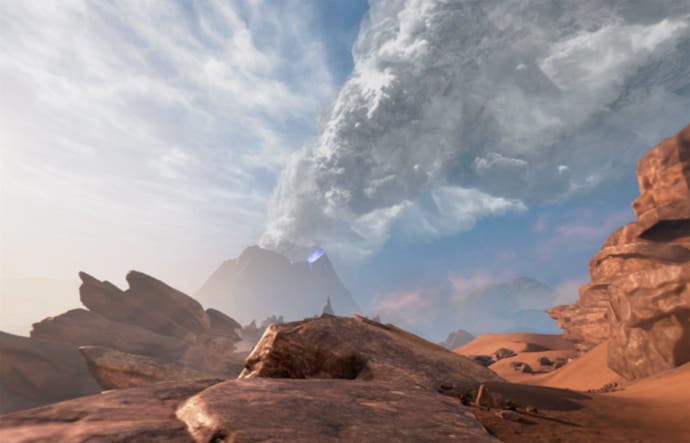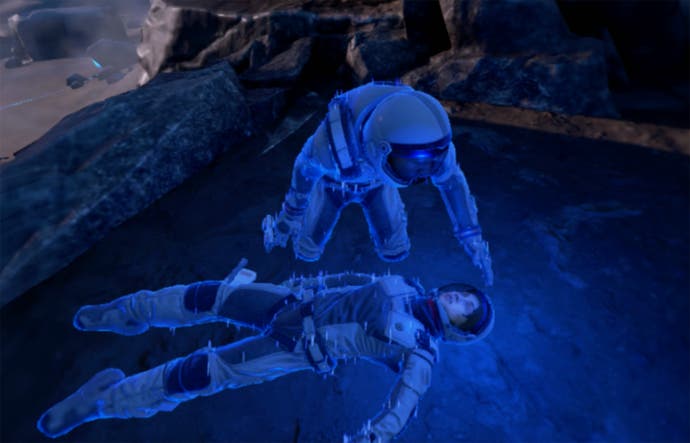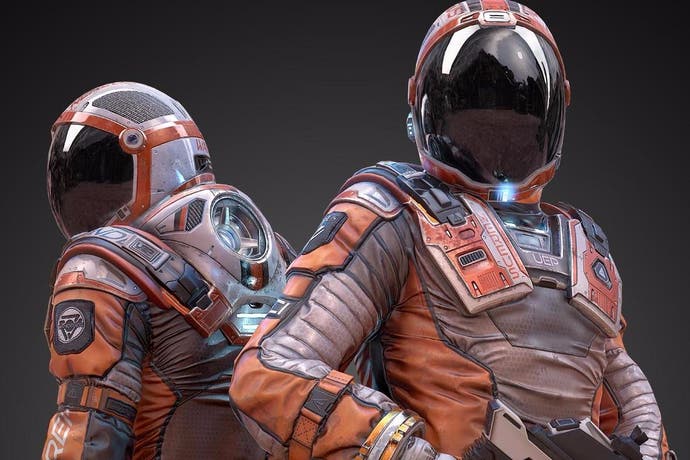Farpoint review
So near, yet so far.
No-one seems quite sure just yet whether or not PlayStation VR has been a success. Headsets are still hard to come by, and if scarcity equals popularity then that suggests maybe this won't be joining the EyeToy on Sony's pile of forgotten hardware shame, but just as hard to come by is any meaningful first party support. One thing is for certain, though - it could really do with another big name game.
Farpoint is the most high profile release on PlayStation VR since January's Resident Evil 7, and it couldn't have come any sooner. Against a tide of interesting curios and throwaway delights, it promises something of substance, and Sony is giving it a sizeable push, bundling it together with the Aim controller peripheral (itself a resurrection of sorts for the PlayStation Move Sharp Shooter from a few years ago).
CGI trailers suggest that Farpoint is a sprawling adventure set on an alien world, the kind of expansive game that PSVR could really benefit from right now. Unfortunately, the reality is anything but.
Farpoint is a limited VR game from Impulse Gear, a fledgling San Francisco developer still finding its feet. It's a game that's aimed at players finding their feet in VR, too, given the emphasis it puts on training newcomers. Everything about its design is based around easing gamers into its virtual world. In fact, it begins with such trepidation that its blatant desire to cater to newcomers seems almost desperate.
Farpoint starts with a small 2D cutscene that slowly increases in size until it fills your vision, that then switches to 3D for a minute before it finally places you inside the VR cockpit of a transport shuttlecraft. Rooted to the spot, you're left to marvel at the vastness of space as the story, told mainly through radio communications, unfolds around you. As a passive bystander you learn that you're on your way to pick up a group of scientists who are studying a big, swirly space anomaly but, as tends to happen with big, swirly space anomalies, a disastrous event soon occurs. This one ends up with you and your fellow astronauts marooned and separated on a strange, alien world.
It's not until you set foot on the surface of this planet that you're finally given full control, although it's a further 10 minutes until you're finally weapons-free.

By default the movement is set so you cannot turn your body. Instead you push ever forwards, sidestepping around rocks as you stumble through a dust storm, searching for other survivors. It's a novel way to reduce the feeling of nausea for those unaccustomed to VR, but strangely the whole game is designed around this control choice. This means that the entire campaign essentially takes place in one long corridor. Sure, it's a nicely decorated corridor with a few gentle bends along the way, maybe a ledge or two to walk across and some rocks and debris to navigate around and take cover behind, but it's a corridor nonetheless.
Seasoned VR players can of course toggle turning 'on' and there's a variety of comfort settings in the options ranging from blink turns to smooth turning. Being able to move freely improves the combat slightly but at the same time it helps reinforce just how limited the game's level design actually is. The moment you take full control over your character and are able to fully explore the environment is the moment you realise that this is little more than an on-rails shooter with some really wide rails.
Thankfully the Aim controller elevates the experience massively, especially in the first few hours when the physicality of holding and aiming a plastic gun is still a novelty. There are some lovely touches that give the gunplay a sheen, such as the force feedback or the way you switch guns. This is achieved by raising your shooting arm above your shoulder, to mimic the feel of drawing a new gun from a holster on your back. It's smooth and satisfying and, most importantly of all, it makes you feel like an absolute badass.
The first few sets of enemies you meet are just as impressive. There are skittering head-crab-a-likes that pounce at you from the floor if you take too long to shoot them. Bigger bugs will charge at you as you blow them into chunks with the shotgun, while others shoot balls of corrosive goo at you from a distance. All explode with a satisfying pop when your bullets find their mark. It's exciting stuff, especially when you reach the first big firefight and really have to concentrate on swapping between weapons and using your explosive secondary firing modes to keep the larger monsters at bay.
After a short while, though, you begin to see the limits of Farpoint's action. Newer enemies lack any real punch, the third act is a disappointment and after the initial dazzle has died down it all quickly runs out of puff.

In the end, I was able to play through the entire campaign in around 5 hours, although it would have been less if a hard crash didn't lose me 30 minutes of progress. There's not much incentive to go back, either. With no optional routes to explore or hidden collectables to search for, return visits to the story mode feel redundant. Instead, there's a threadbare challenge mode to take part in. Essentially a timed score attack mode you must push through waves of enemies whilst trying to reach checkpoints that extend your time limit. It's set in repurposed areas from the campaign and it gets tired fast, especially as the time constraints interfere with any desire to just casually play around with your guns.
The cooperative multiplayer fares a little better. It's a solid challenge that pits two players against hordes of enemies in small arenas. No time limit means you can take things a little slower and enjoy the shooting but again the simplicity of the core gameplay leaves you with an overall sense of emptiness.
The Aim controller itself is a solid, well made piece of kit that feels great to hold. On launch you can pick up the game and controller bundle for around £70 which is a reasonable asking price, especially considering a double pack of Move controllers will set you back the same amount. At the moment Farpoint is the only game compatible with the Aim controller, but more are promised in the future so it's not a bad investment for PSVR enthusiasts.
At its heart, Farpoint is a budget game, sold and promoted as a AAA title. The Aim controller lifts the gunplay above the mediocre but once that novelty wears off it's hard not to notice just how basic everything is. For newcomers to VR it can be a jaw-dropping experience made all the more novel thanks to the Aim controller. For everyone else, especially VR veterans, Farpoint is simply a shooting gallery whose one grand idea is placing a slightly bigger lump of plastic in your hands.


